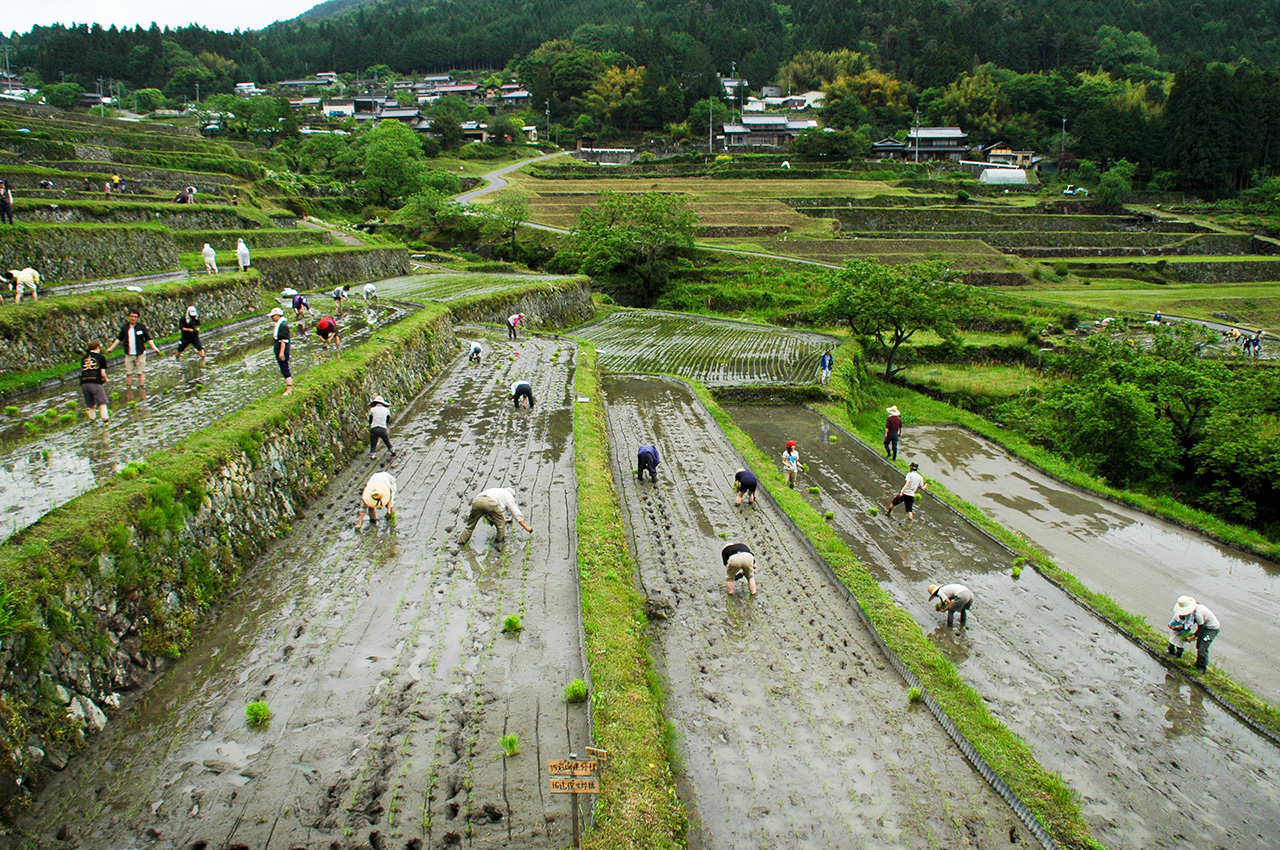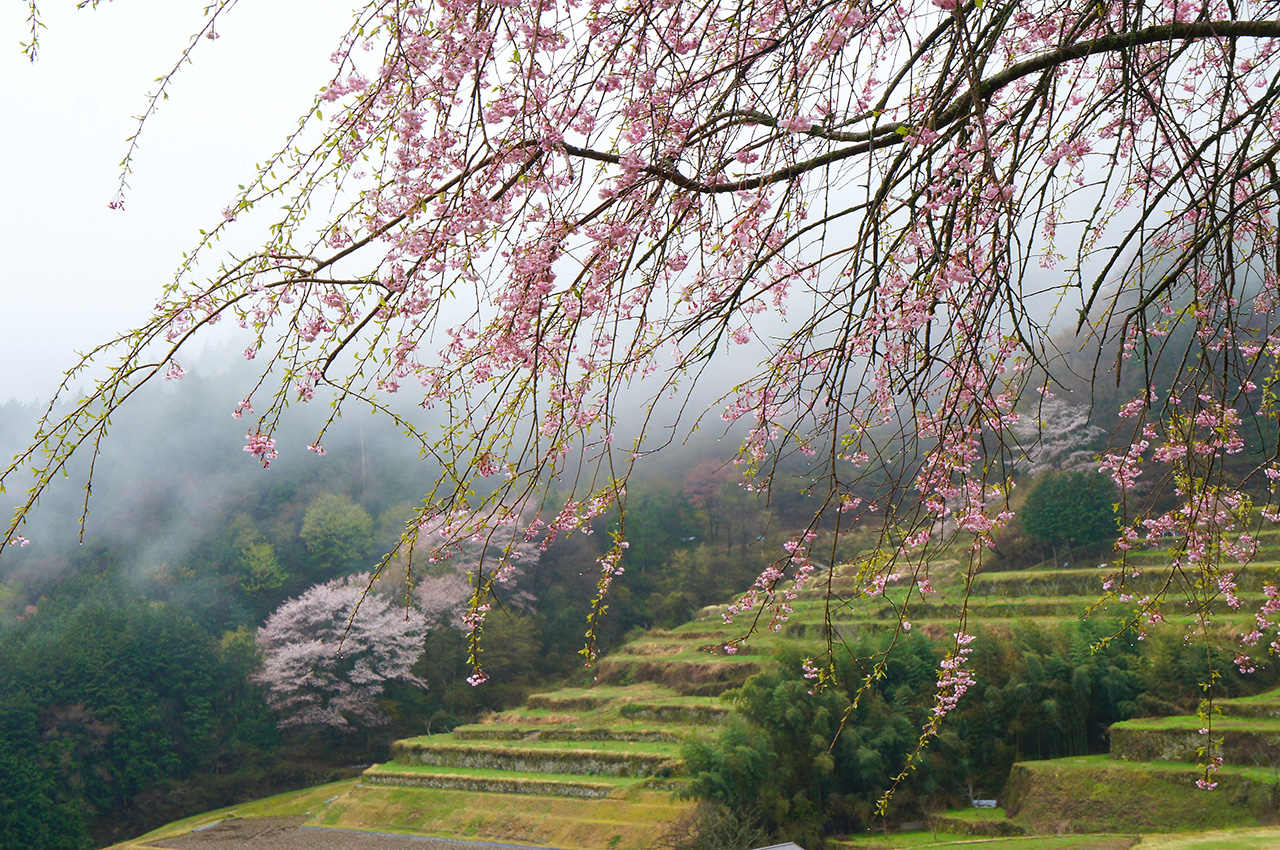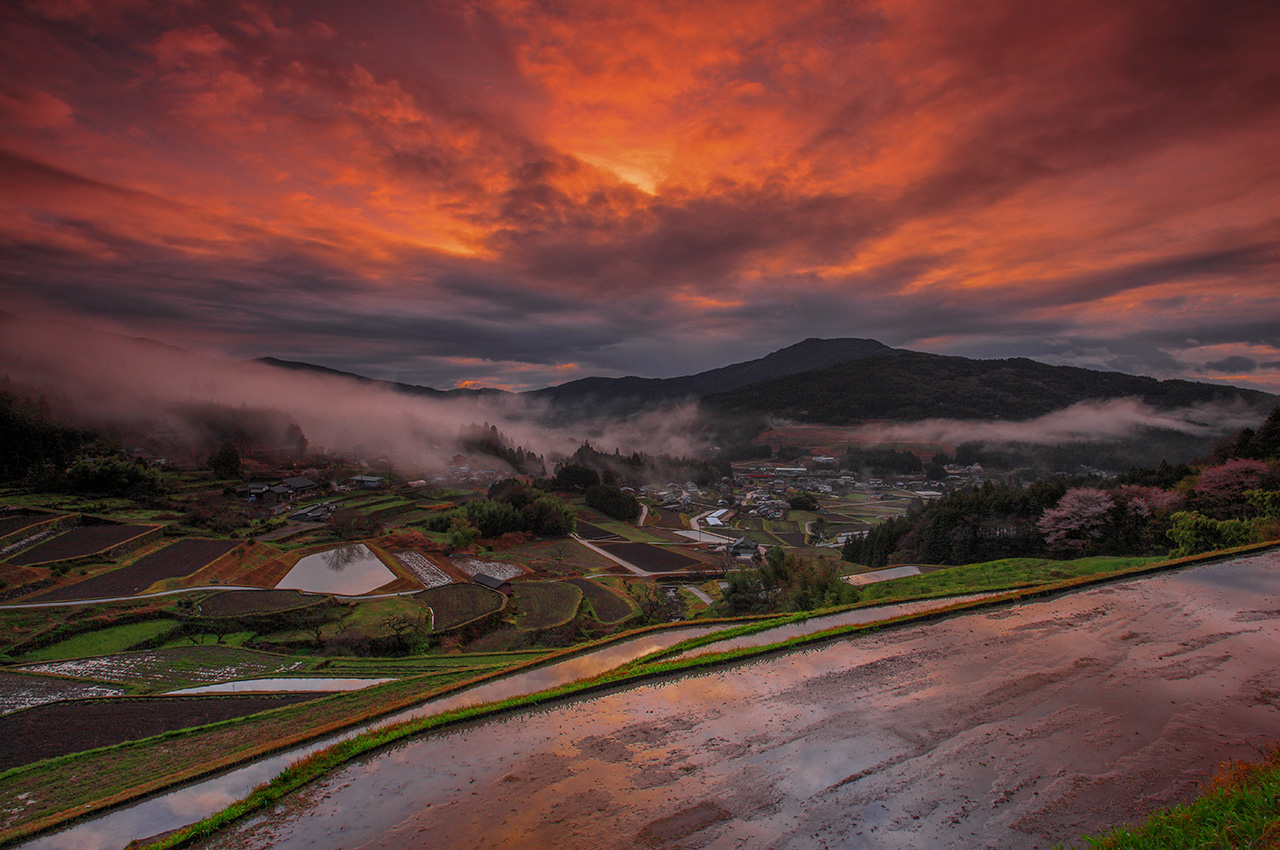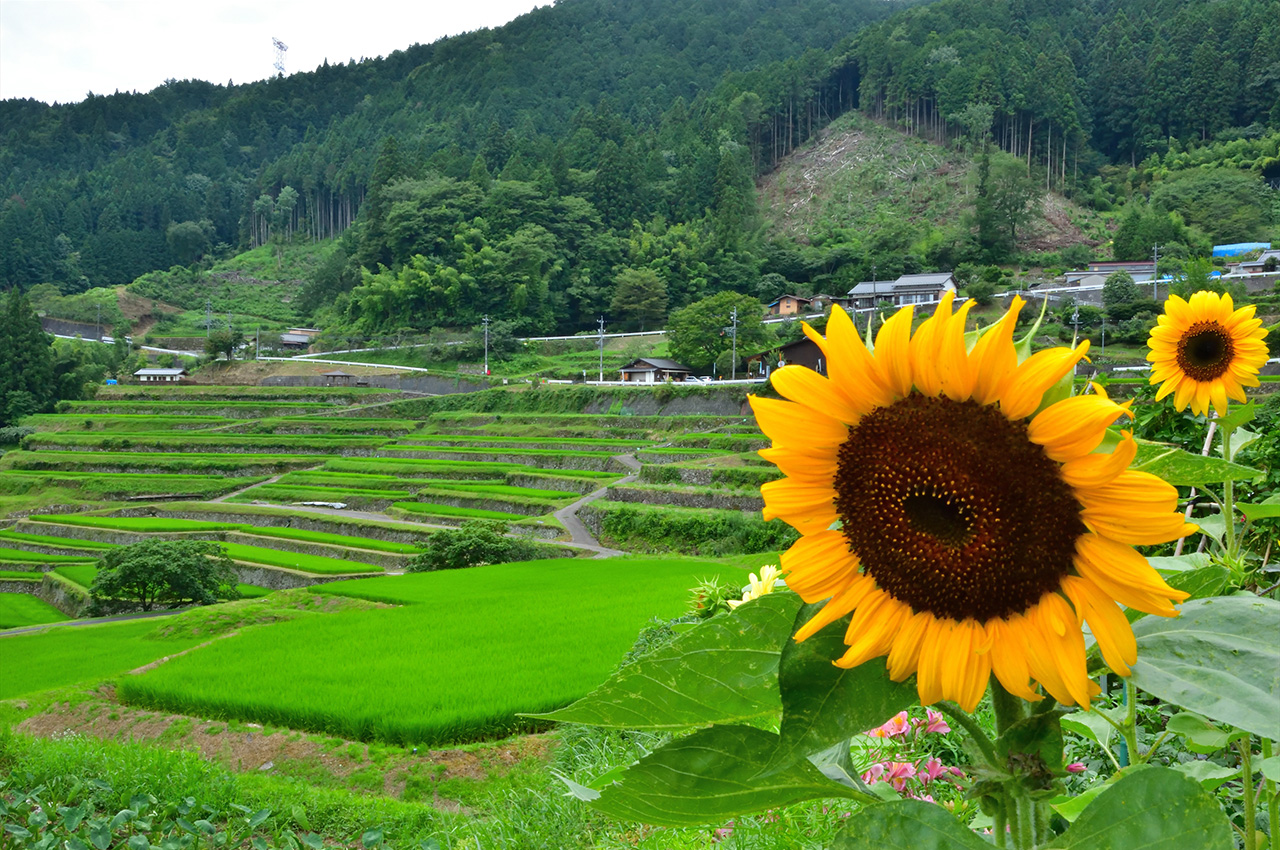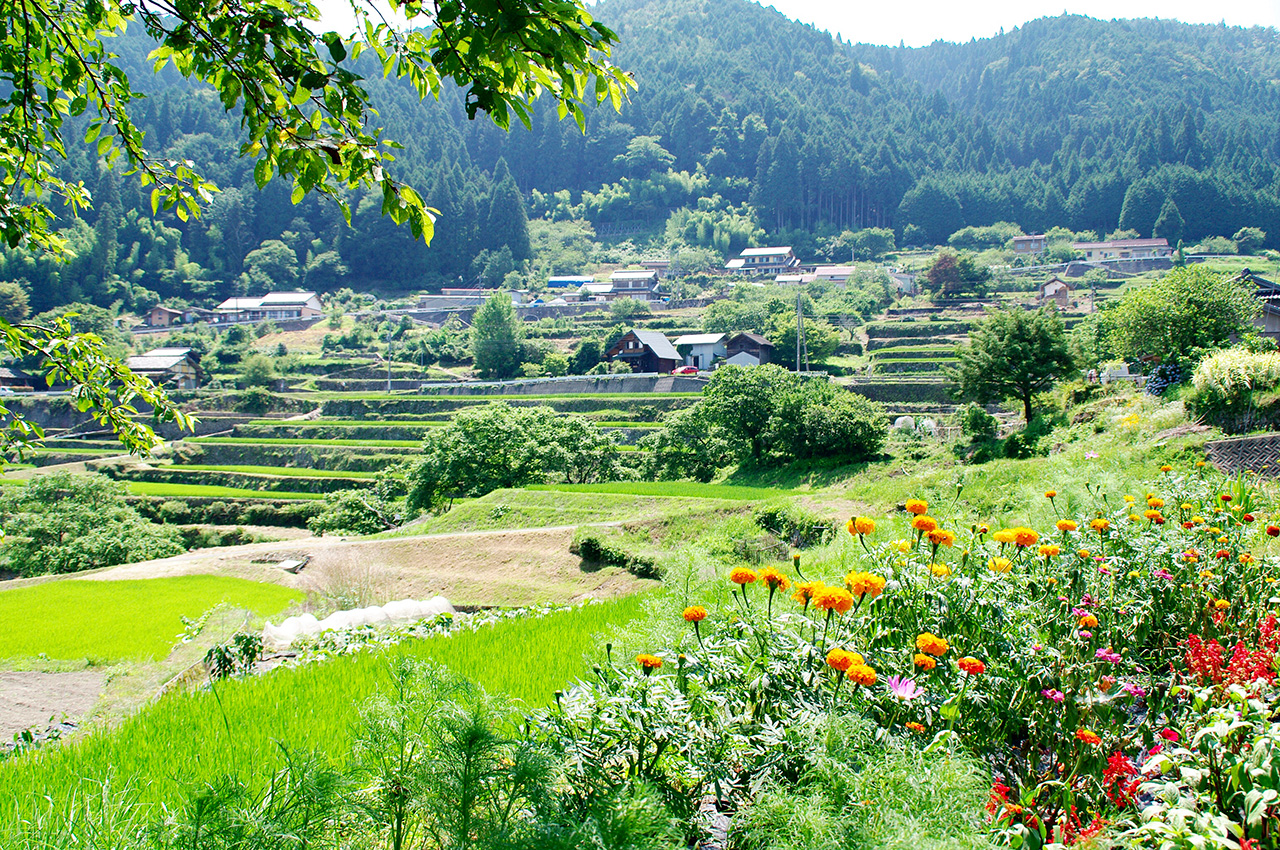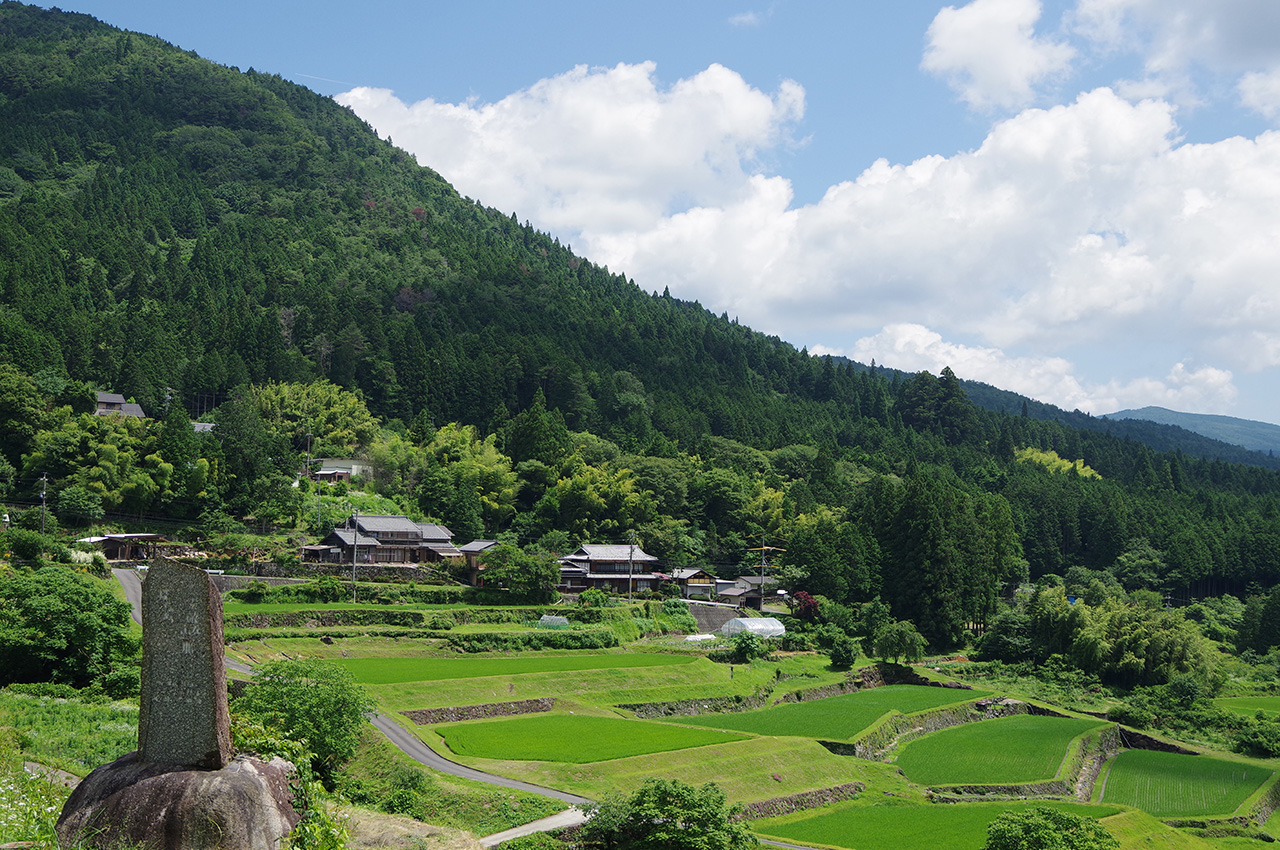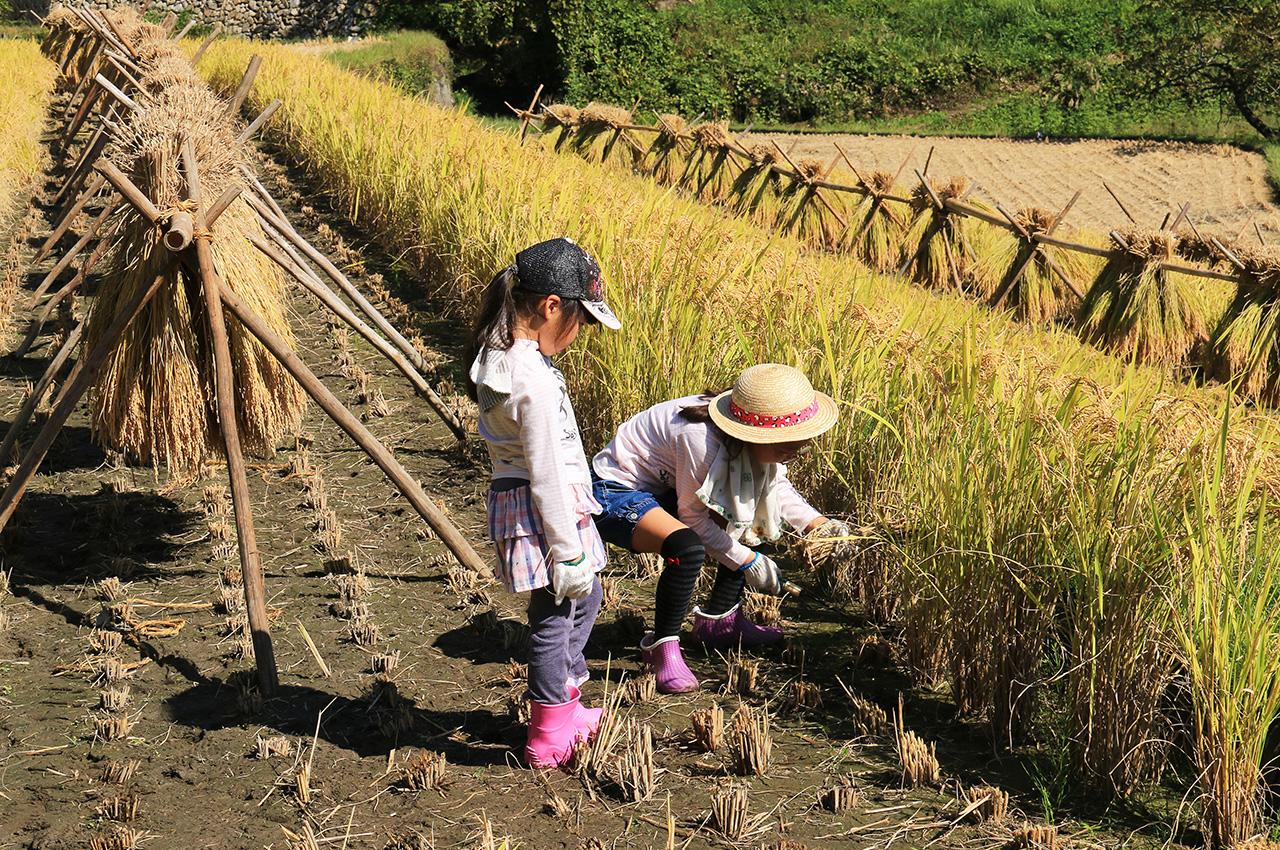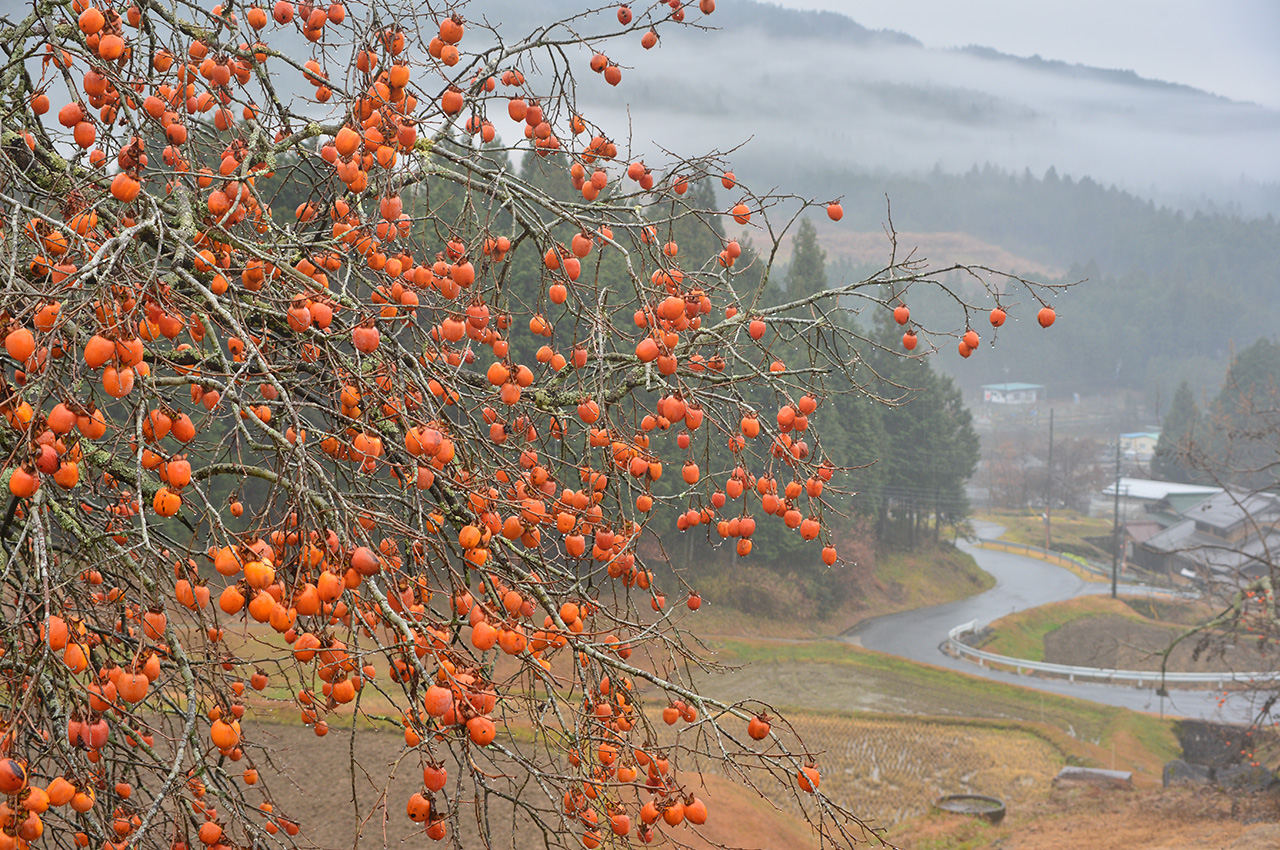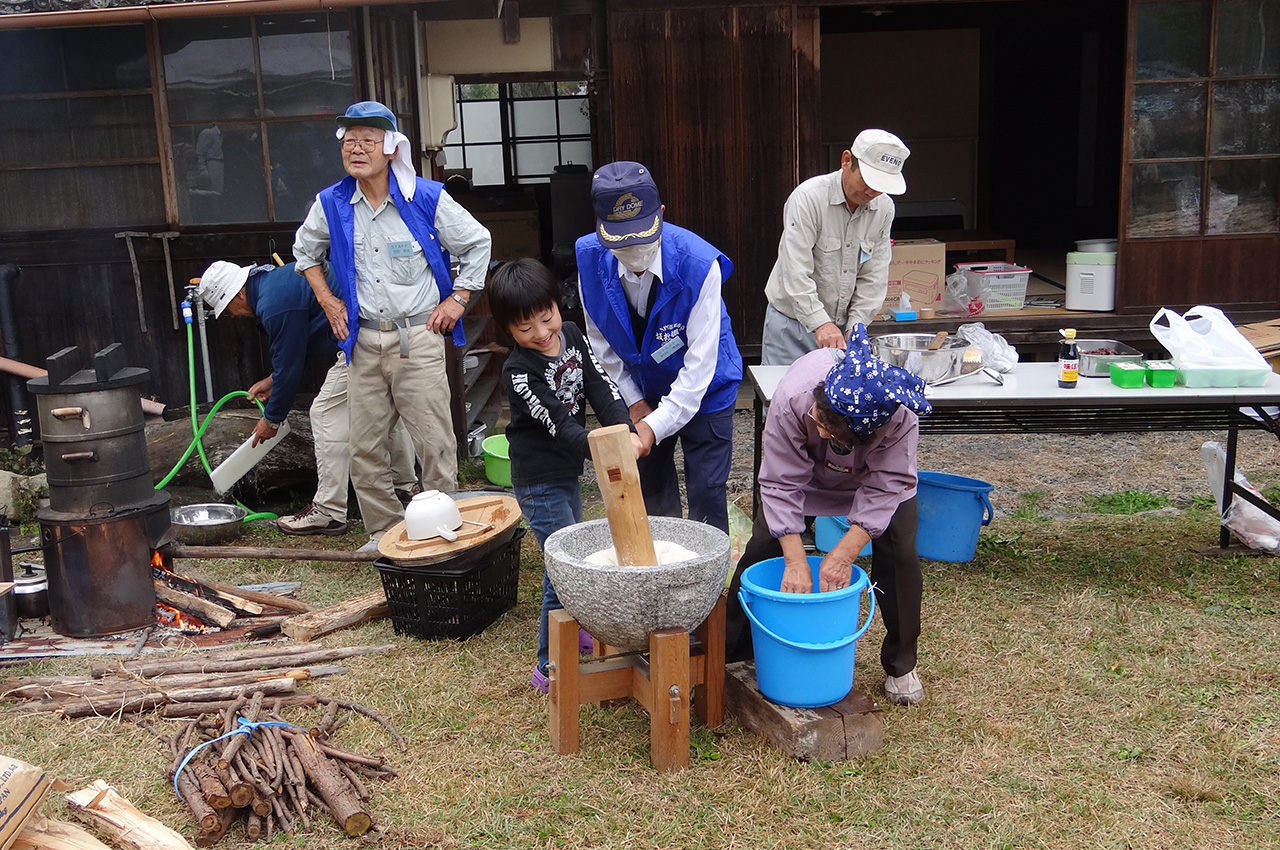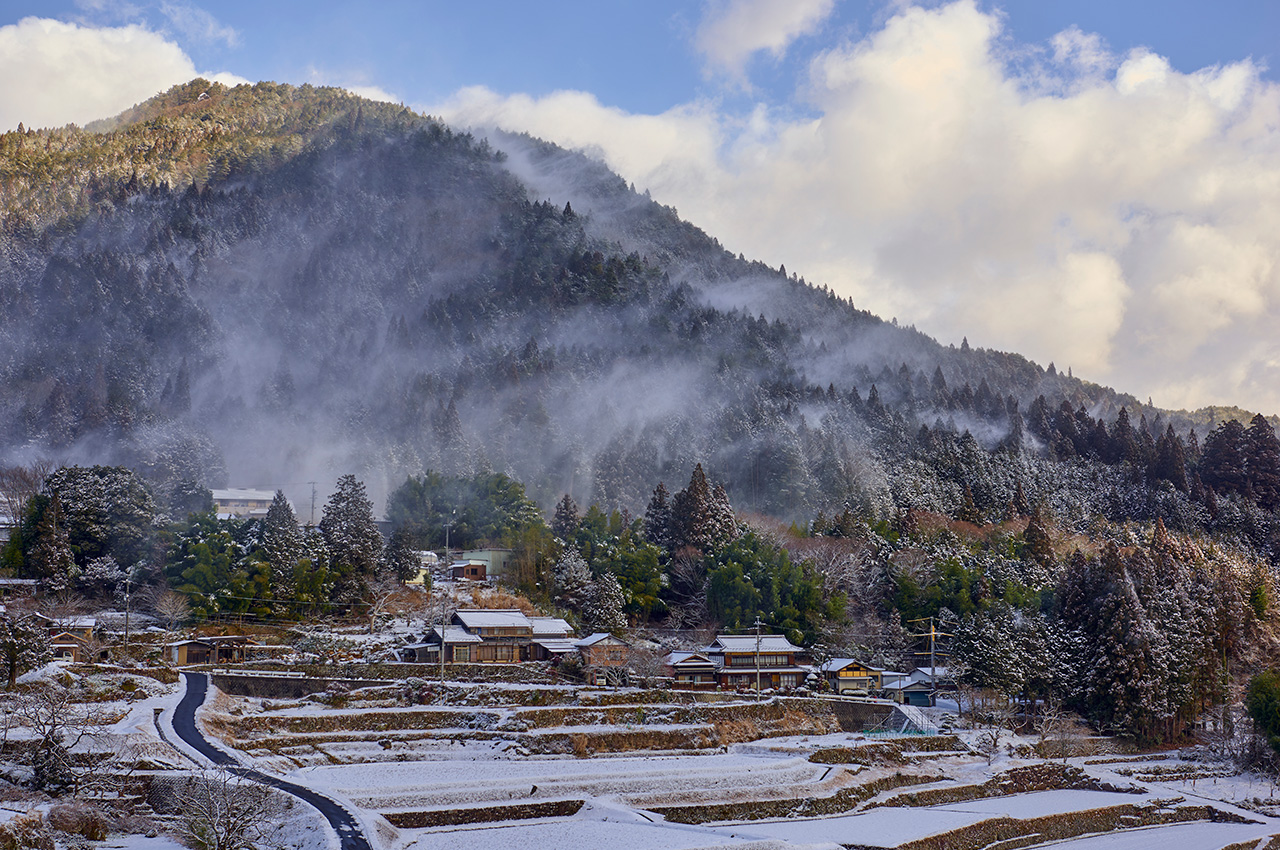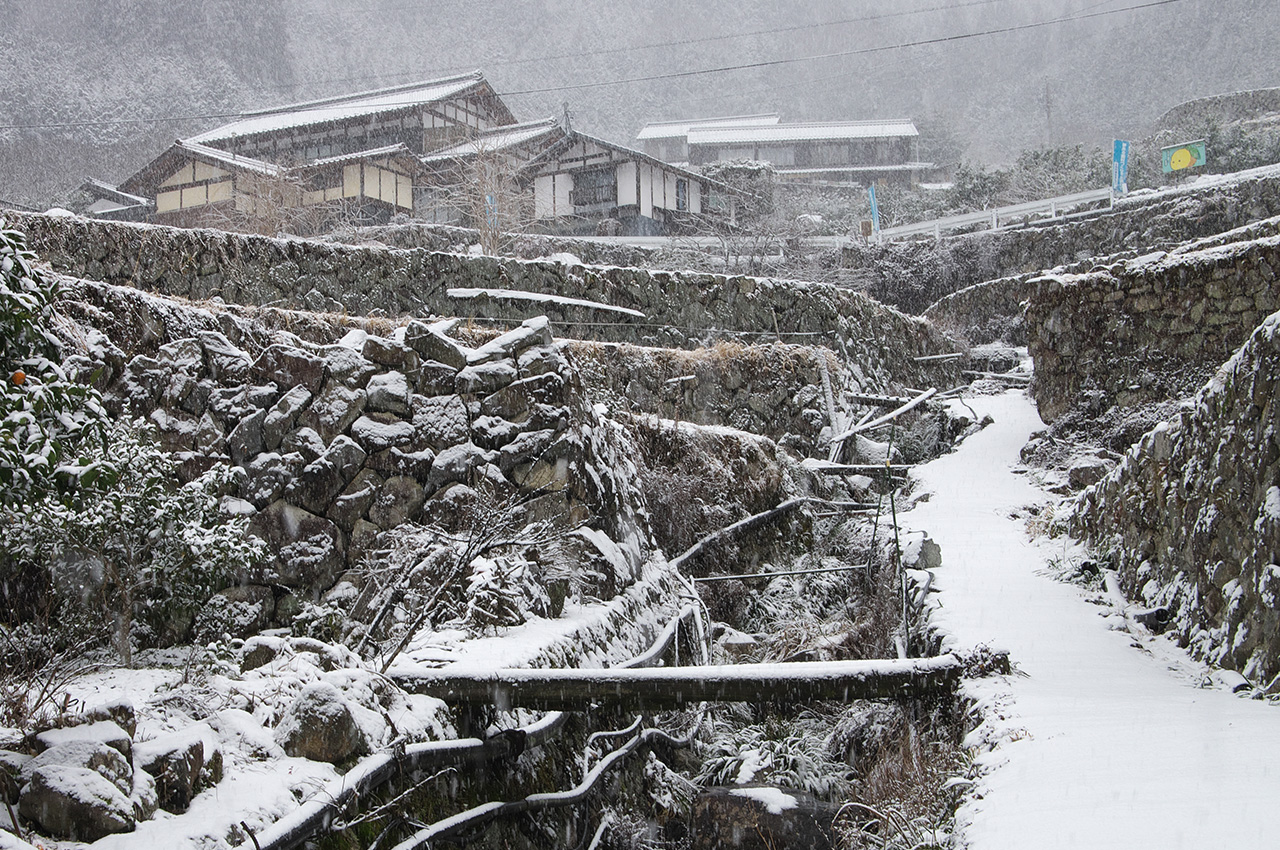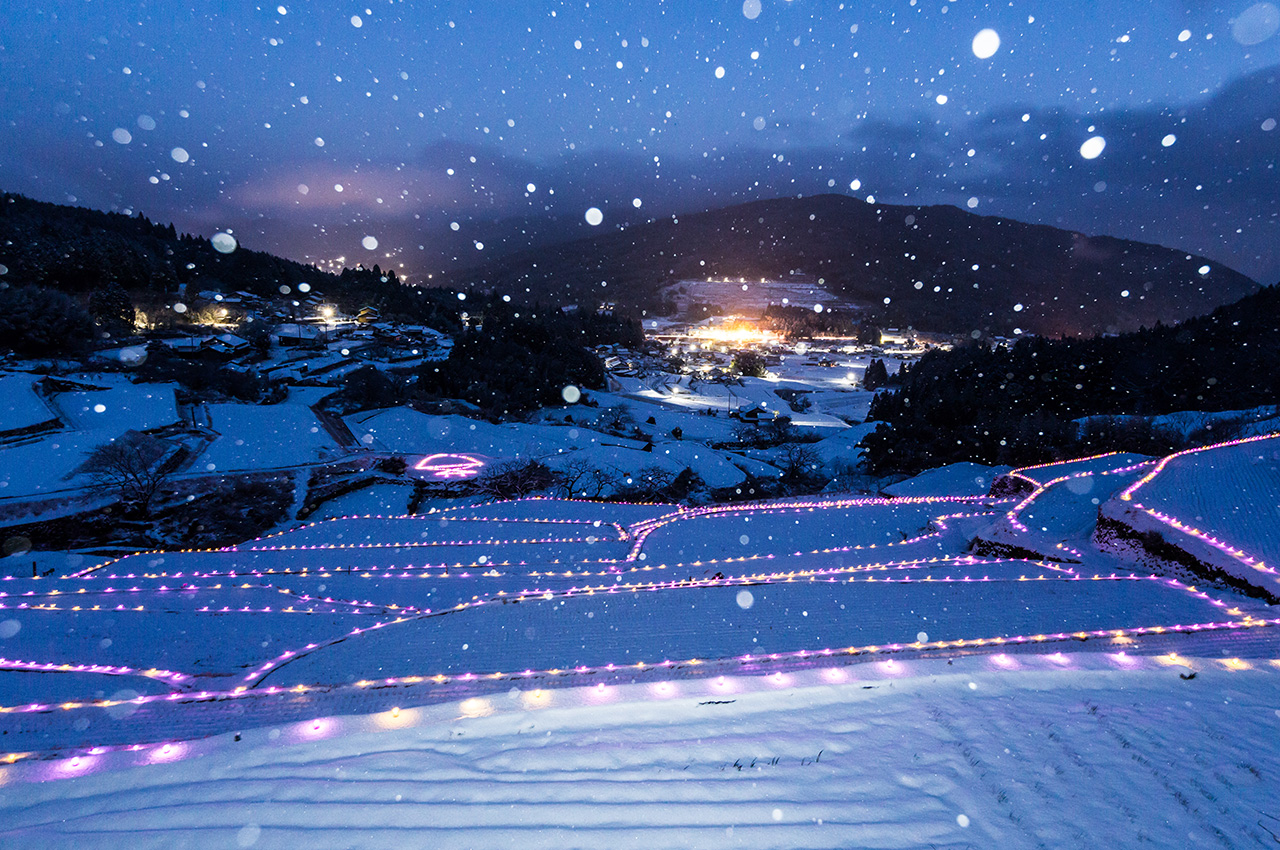
【April】 Spring festival (held by six local shrines)
【May】 Rice planting

【June】 Festival of the God of the rice fields (local Shinto deity)
【August】 Summer festival in Nakanoho town, Biotope observation experience

【September】 210 days rice harvest (Shitagongen shrine)
【October】 Harvest festival
【November】 Autumn festival (Uegongen Shine), terraced rice fields illuminations, Masonry school

【December】 Masonry school (Masonry experience)
【January and February】 Charcoal grill experience
In May, the bright blue sky of spring can be seen reflected in the flooded rice fields. The sun, rising from behind Mount Kasagi, is reflected in the rice fields producing stunning scenery as if reflected in a mirror.
The rice growing process in spring
【Early April】
Plowing of the rice fields
This process mixes air into the soil of the rice field, activating microorganisms in the soil that help rice cultivation.
【Late April】
Flooding of the rice fields
The process of flooding the rice fields, breaks up the soil and levels the surface of the field. This also helps to prevent water leaks from the fields.
【May】
Rice planting
When the ambient temperature warms up, the rice is planted by hand in the traditional manner. It is an event that both family and friends look forward to annually.
The growth of rice during spring
In April, we put the seeds of the rice plants in salt water and select the most high-quality seeds.
In May, the seeds are planted and grown in boxes. When the seedlings are about 13cm tall, they are re-planted in the rice fields.
In June, the seedlings produce new leaves and grow in to 6 or 7 stems.
The clear water from Mount Gongen flows down and fills the Sakaori terraced rice fields. During the day, dragonflies and butterflies can be seen, and by night you can see fireflies.
In the summer, the sunshine helps grow the rice. The God of the rice fields also watches over the terraced rice fields.
The rice growing process in summer
【July】
Water management of the rice fields
The level of water in the fields is adjusted to give vitality to the roots and grow them in to strong rice plants.
Grass cutting and weeding
The grass and weeds in and around the rice fields are removed so that they do not absorb the nutrients of the soil.
Disease and pest control
We keep the use of herbicide and insecticide sprays to the bare minimum, to keep the environment natural.
The growth of rice during summer
Between July and August is the best time for rice growing. A flower bud, called an “Inaho” is born from the plant. It will eventually blossom and produce its fruit in about 50 days.
During the harvest season, the terraced rice fields look golden in color. Thanks to the power of the earth and water, the people feel blessed at the sight of full rice fields. They harvest the rice under the beautiful autumn sunshine.
The rice growing process in autumn
【September】
Rice harvest
The terraced rice fields are too narrow for combine harvesters, so the rice is harvested by hand.
Drying the rice (sun-dried) -Hazagake
The freshly harvested rice still has a lot of water content, so it is hung to dry in the sun. Sun-dried rice is said to be the most delicious.
【October】
Threshing of the rice
-dried rice.
The rice is separated from the rice plant.
Removing the rice husk and milling the rice
Once the rice has been removed from the plant, the husk of the rice grain is removed and the rice grains are then milled to produce brown rice. The brown rice is then subsequently polished to produce white rice.
The growth of rice during autumn
【September】
Maturing of the rice
After flowering and pollination, the rice plant grows gradually to a large size. The 40 to 50 days after flowering is when there is greatest growth in the case of rice.
In the winter, the artistry of the stone walls that make up the terraced rice fields can be seen. Winter is the time to look forward and prepare again to grow safe and delicious rice. Repairs are made to the field walls and the paths connecting the fields. The forest where our source of water comes from is also looked after.
We also hold hands-on stone masonry experiences and charcoal grill experiences, so that people who live in more urban areas can try their hands at these traditional activities and we can exchange our ideas and opinions. These kinds of activities mean that the knowledge and ideas of our terraced rice fields can be passed on to future generations.
The rice growing process in winter
【December to March】
Repairs to the stone masonry and the narrow paths around the fields.
Nourish the rice fields.

